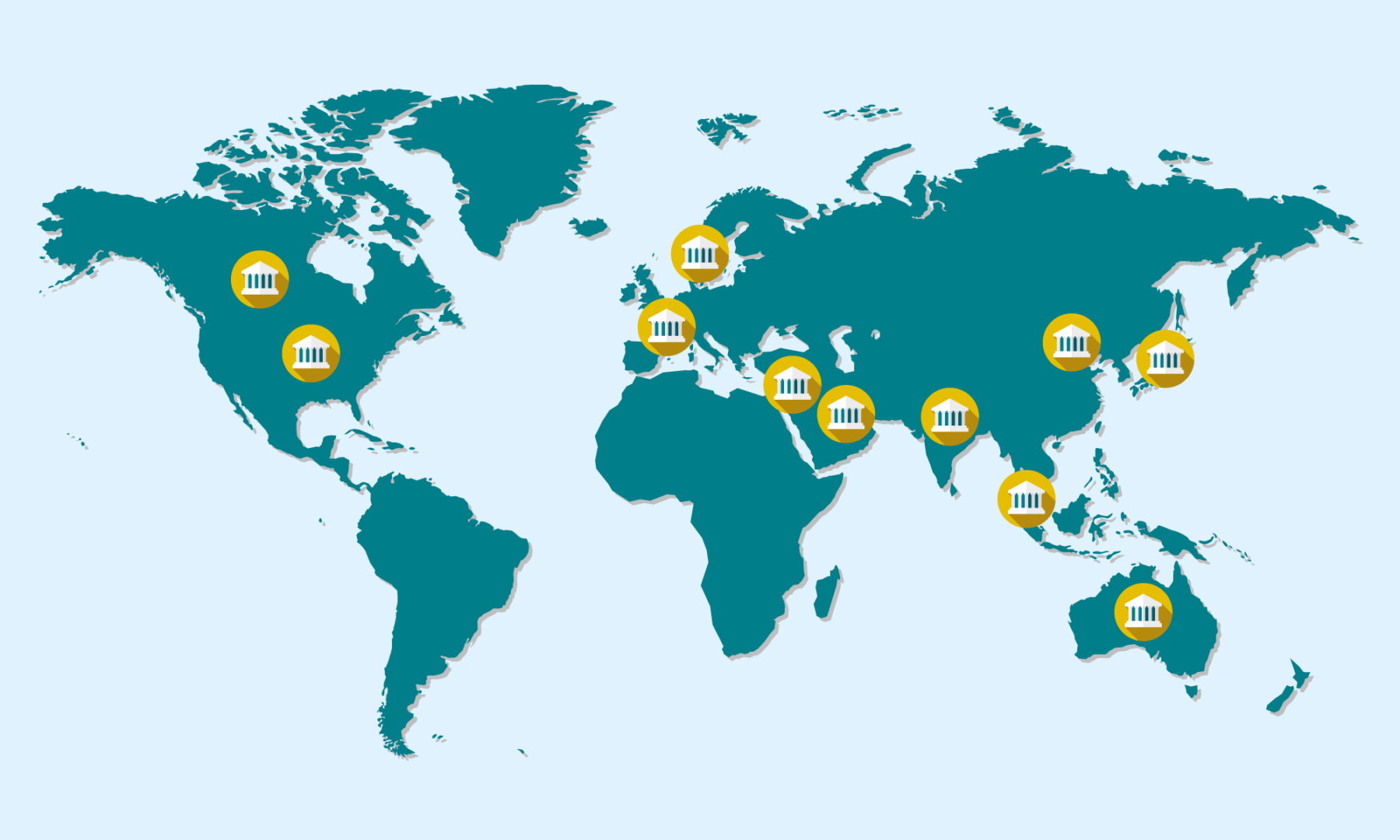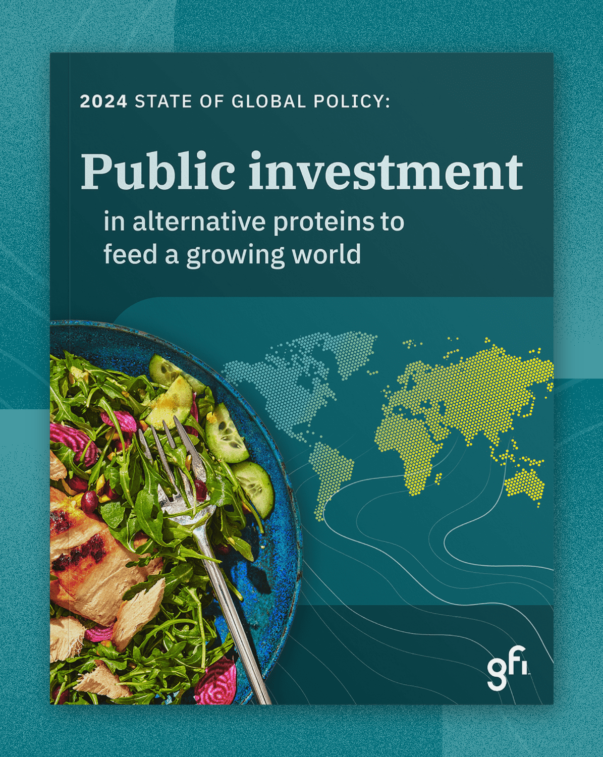A rare glimpse into the global regulatory landscape for alternative proteins

Alternative proteins are essential to achieving global climate, health, food security, and biodiversity goals.
To make this necessary shift to a far more sustainable and secure food system, it is critical that the systems that help regulate what we eat keep up with product innovation and new production methods. Codex Alimentarius, which is Latin for ‘food code’, plays a vital role in that. This code serves as a guide for global food legislators and control agencies, the international food trade, food handlers, and consumers.
The code is developed by the Codex Alimentarius Commission (CAC), an international organization run jointly by the Food and Agriculture Organization (FAO) and the World Health Organization (WHO). As the CAC considers how it should address alternative proteins, as well as other “new food sources and production systems,” countries have shared information about regulatory structures and challenges in response to a Circular Letter issued by the Commission’s executive committee (CCEXEC).1
While regulatory landscapes vary around the world, analysis of these updates reveals some common themes that can help governments identify best practices and inform the alternative protein industry’s plan for success.
Putting plant-based proteins into context
China
Several countries indicated that plant-based proteins are not subject to pre-market approval requirements, meaning they do not need to seek a special review from regulators before being sold. This tends to occur in countries with long histories of safe consumption of plant-based proteins. This is the case in China, where plant-based products are not considered to be “novel foods” because they have been consumed for a long time in the country.
Singapore
Under Singapore’s novel food framework, food that has been determined to have a “history of safe use” may not require pre-market safety assessment. Therefore, plant-based proteins made from food ingredients with a history of safe use are generally not considered to be novel foods in Singapore as well.
Australia
Australia’s regulations also permit some plant-based proteins to be sold without pre-market approval, although it clarified that if new sources of protein or different parts of existing plants are used that do not have a history of safe consumption, then pre-market approval may still be required.
Specific standards and regulations apply to plant-based proteins in some countries, regardless of whether the proteins are considered novel.
China
China noted that it has mandatory food safety standards for plant protein in food processing and for soybean products as well as a voluntary standard for plant-based meat products established in 2021 by the relevant industries.
Japan
Japan likewise commented that, due to the historical popularity of soybean-based products in the country, it already has standards for soybean-based products. Recently, Japan established a new standard for textured soy protein products as well as regulations to permit fair labeling for all plant-based products.
Saudi Arabia
Following this trend, Saudi Arabia is in the process of developing regulations for plant-based protein alternatives.
Canada
Canada has specific labeling and compositional regulations for “simulated meat and poultry products” that do not contain animal meat.
Utilizing existing frameworks for cultivated meat
Some countries already have general regulatory frameworks for novel foods and in some cases for foods produced using novel technologies. Typically, this involves a pre-market authorization process for individual products and ingredients. These frameworks usually apply to food products and food ingredients that do not have a “history of safe use,” within the country.
In responding to the Circular Letter, several countries stated that they expect to, or already do, utilize existing pre-market assessment processes to assess cultivated meat and fermentation-derived products rather than create separate regulatory frameworks.
Countries explained how they are proceeding under these existing regulations:
Singapore
Singapore used a novel food regulatory framework to grant approval to the first cultivated meat product on the market in 2020, illustrating the potential for success using this novel food pre-market assessment regulatory framework. Pre-market approval is granted on a case-by-case basis when companies submit safety assessments for the product to the Singapore Food Agency (FSA).
Australia and New Zealand
Australia and New Zealand stated that their food regulation system is already equipped to deal with new foods produced through cellular agriculture under the Novel Foods Standard. To gain pre-market approval for a novel food, a company can submit an application to Food Standards Australia New Zealand (FSANZ). Additionally, Australia and New Zealand have regulations for GM foods that could apply to cultivated meat products or fermentation-derived ingredients if they are produced using certain genetic modification technology.
Canada
Similarly, Canada shared that it intends to regulate cultivated meat products will be regulated under its existing novel foods regulations and is not considering new regulatory approaches. The authorization of a novel food requires a pre-market submission of detailed information about the product.
The European Union
The European Union also has novel food regulations prescribing a pre-market safety evaluation that would apply to cultivated meat products. Novel foods must undergo a safety evaluation by independent experts at the European Food Safety Authority (EFSA). Additionally, the EU has regulations for GM foods that could apply to cultivated meat products or fermentation-derived ingredients if they are produced using certain genetic modification technology.
India
India stated that cultivated meat products would fall under the definition of novel food and will require approval from the National Food Regulatory Body before they can be sold.
The unique case of fermentation-derived proteins
Fermentation-derived ingredients may be treated differently if they do not meet the regulatory definition of “novel.” Generally, novel foods are defined as foods that do not have a significant history of consumption or are produced by a method that has not previously been used.
Canada
For example, Canada reported that fermentation-derived ingredients such as enzymes and other substances with a technical purpose in the food would be regulated as food additives rather than as novel foods.
The European Union
In the European Union, fermentation-derived ingredients are assessed on a case-by-case basis to determine whether they are truly “novel,” depending on whether the fermentation technologies result in significant changes in the composition or structure, nutritional value, metabolism, or level of undesirable substances.
The United States
The United States also uses existing frameworks to regulate fermentation-derived ingredients produced through new technologies. New ingredients require approval by the Food and Drug Administration (FDA) unless they are “generally recognized as safe” (GRAS). If an ingredient is not GRAS, it must be submitted for FDA approval using a food additive petition. Substances that are used to impart a color to food must be approved as color additives.
Countries to watch
Some countries are developing innovative approaches to the regulation of alternative proteins to keep pace with the changing landscape.
Singapore
Already a global leader as the first country to have approved cultivated meat for sale, Singapore takes a nimble approach to regulation through a dynamic regulatory framework. Since approving cultivated meat for sale in December 2020, Singapore has updated its novel food guidance four times to increase clarity and transparency. This allows regulators to incorporate feedback from industry and continually revise the guidance in response to innovations and changes in the market.
Japan
Japan is advancing a similar cooperative model to develop and improve regulation of alternative proteins. Japan’s Ministry of Agriculture, Forestry, and Fisheries set up a communication forum in 2020 between the relevant private food industries and the government for the purpose of exchanging opinions and information on research, development, and utilization of new food technologies. Additionally, Japan established the Japan Association for Cellular Agriculture as a collaboration between government, industry, and academia working together to create formalized guidance for cultivated products.
Korea
Another country to keep an eye on is Korea, which noted in its comments that it is currently working to develop guidelines tailored to cultivated meat and plant-based products. Korea is taking a special focus on safety assessments and is considering current market growth of various products before establishing guidelines.
The United States
The United States is also taking a unique approach for the regulation of cultivated meat products, utilizing a joint framework between two of its regulatory agencies, FDA and the U.S. Department of Agriculture (USDA). Under this framework, the regulatory process starts with a pre-market consultation with FDA2. For cultivated meat products that fall under USDA’s jurisdiction,3 FDA will oversee the first stages of production through cell harvest, before transitioning authority to USDA for the processing, packaging, and labeling steps. FDA retains authority over the entire process for the specific products under its jurisdiction.4
Innovation anywhere changes food everywhere
Governments worldwide are grappling with multiple existential threats – fragile supply chains, intensifying climate events, and the looming threat of future pandemics and antibiotic resistance – all while trying to feed a growing population. Current methods of meat production fuel these threats, and rising global demand for meat will exacerbate them.
Alternative proteins—making meat from plants or cultivating it from cells—enables the world to shift to a far more sustainable and secure food system than the status quo. As the development of regulatory frameworks for alternative proteins proceeds, we hope countries continue to share information on their approaches, helping to identify possible future directions for global harmonization.
1 Earlier this year, CCEXEC issued a Circular Letter soliciting information from Member countries and Observer organizations on existing regulatory structures and other matters relating to new food sources and production systems (NFPS). It published responses in a report prior to its 82nd Session in June 2022. Singapore’s comments were published separately.
2 The FDA completed its first pre-market consultation in November 2022.
3 Livestock, poultry, and catfish
4 Cultivated seafood (except catfish)

Resource
The State of Global Policy: Alternative proteins
Our annual State of Global Policy report tracks public investment in alternative proteins and showcases the actions governments take to position themselves as leaders in the field.

